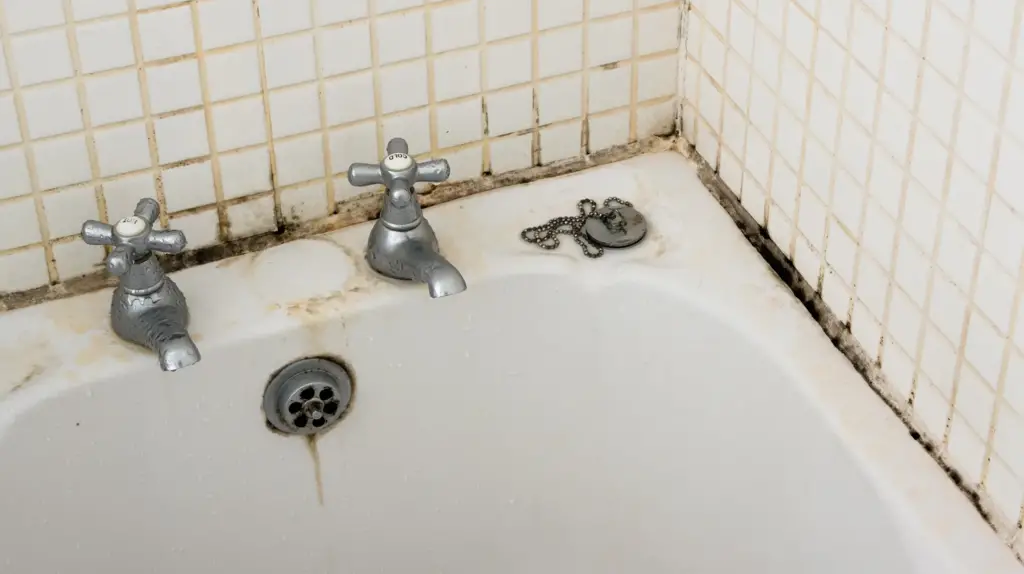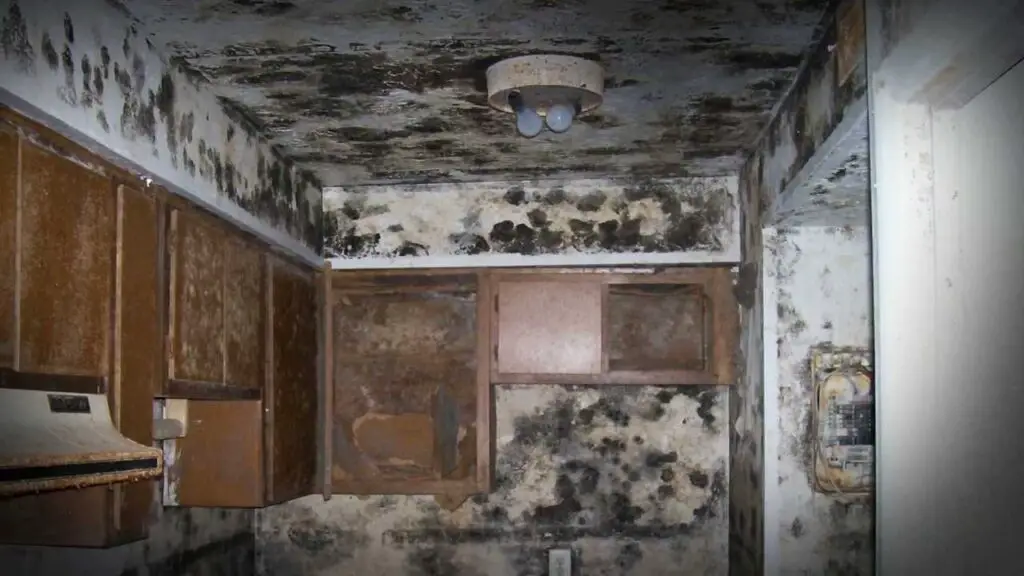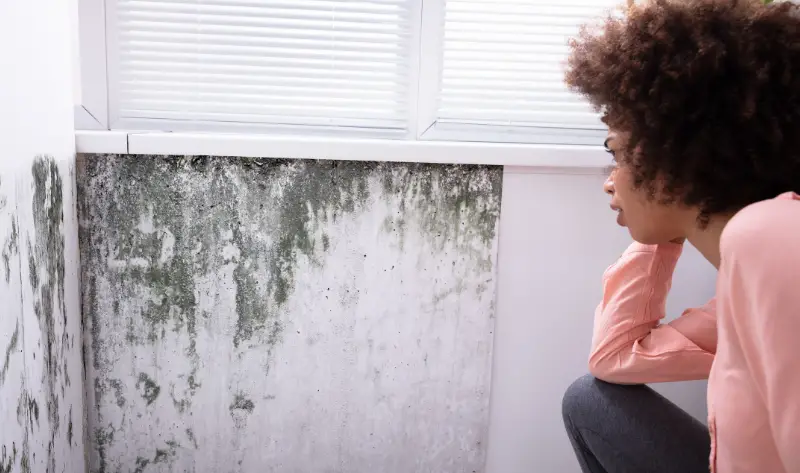Mold, a common household nuisance, can be more than just an eyesore or a musty smell. It actually has the potential to wreak havoc on our health.
Each person’s body is affected by mold toxicity in different ways. Some experience constant migraines and headaches, shortness of breath, brain fog, fatigue or even depression.
Since symptoms differ from person to person, they may not be quickly associated with mold exposure. Many people suffering from mold illness struggle to get a proper diagnosis and investigation.
It’s common to think “my house is clean” it can’t be mold! However, mold comes in many forms. In this article, we’ll share what toxic mold is, the signs and symptoms, and how it can be treated.
What Is Mold?
Mold is different types of fungi that grow in moist environments. It’s often found in bathrooms, basements, kitchens, and anywhere moisture resides for long periods of time. Unfortunately, leaks or floods are not the most common reason for mold growth in a home. Most often mold growth is caused by improper ventilation based on how the house is built and retained moisture behind the walls and floors of a basement.

These fungi spread by invisible “seeds” called spores, which travel through the air. They then take root wherever they find a humid surface. These spores proliferate quickly and can take hold in places with poor ventilation and high humidity in less than 24 hours.
The problem starts when you inhale these spores. They produce toxic substances known as mycotoxins that can produce an immune response in some individuals and are actually extremely toxic themselves. This is why some molds are called “toxic molds”.
Mold Colonization
Mold colonization in the body typically occurs when we inhale or ingest mold spores. When these spores find a suitable environment, they can settle in specific areas and start to grow, establishing a colony within our bodies.
One common area where mold colonization can occur is the respiratory system. Mold spores inhaled through the air can settle in the lungs, causing respiratory symptoms such as coughing, wheezing, and shortness of breath.
Individuals with pre-existing respiratory conditions, such as asthma or allergies, may experience more severe symptoms when exposed to mold.
Another target for mold colonization is the sinuses. Mold spores can enter the nasal passages and sinuses, leading to chronic sinusitis.
Symptoms may include facial pain, congestion, post-nasal drip, and recurrent sinus infections. If left untreated, mold colonization in the sinuses can persist and contribute to long-term health issues.

The gastrointestinal tract is not immune to mold colonization either. Mold spores can be ingested through contaminated food or water, leading to digestive symptoms such as abdominal pain, bloating, diarrhea, and nausea.
In some cases, mold colonization in the digestive system can contribute to the development of food sensitivities and other gastrointestinal disorders.
Now that we understand the potential areas where mold colonization can occur, let’s explore how to identify and eliminate these unwelcome guests.
What Are The Symptoms Of Mold Sickness?
Regular exposure to mold can cause allergy symptoms, such as:
- Wheezing/shortness of breath
- Rash
- Watery eyes
- Runny nose
- Itchy eyes
- Coughing
- Redness of the eyes
- Long standing or frequent sinusitis
And, serious pain and neurological symptoms, such as:
- Headaches and migraines
- Joint pain
- Muscle cramping, aches and pains
- Persistent nerve pain
- Numbness, tingling or tremors
- Vertigo/Dizziness
- Frequent colds and flu
- Fatigue and weakness
- Poor memory, brain fog, difficulty with focus

In some cases, the spores from mold take root and grow in specific parts of the body, such as the lungs and sinuses. This can cause serious respiratory illnesses and infections.
How Long Do Symptoms Last?
The tricky thing about mold exposure is that it’s different for each person. The amount of time mold exposure symptoms persist depends on:
- What type of mold they are exposed to.
- How long the exposure has been.
- How well their bodies eliminate toxins.
Those who process toxins well can see their symptoms disappear as quickly as a few days. Others who eliminate toxins slowly can experience symptoms for much longer. They could be ill for months or even years after the source of mold is eliminated.
What Are The Signs Of Mold In Your House?
Musty smells are a tell-tale sign of mold. Another common indicator is visible signs of water damage.
Mold grows fast. Within 24 hours of a water leak, or a flood, mold will begin to take hold. This mold can grow on anything that’s humid – walls, floors, ceilings, furniture, and even wet laundry.

Getting A Diagnoses For Mold Sickness
While symptoms to mold exposure are not uncommon (some studies suggest that mold allergies may affect up to 24% of the population), many health care professionals struggle to pinpoint the cause behind these symptoms.
People suffering from mold exposure can often be misdiagnosed with disorders such as:
- Depression
- Anxiety
- Chronic fatigue syndrome
- Bipolar disorder
- Fibromyalgia
- Lyme disease
It’s essential to find a health professional that recognizes the symptoms associated with mold and then test for it. Diagnosis is a combination of lifestyle and environmental assessments, and urine and blood tests.
You can take a proactive approach, start by ingesting activated charcoal on a daily basis. It is a great way to help your body stay free of toxins such as mold, heavy metals, toxins, chemicals, and pharmaceutical drugs from your body.
You can find it various forms such as powder form, liquid form and chewable tablets –
Check out Schizandu ORGANIC ACTIVATED CHARCOAL CAPSULES FROM COCONUT – Get 10% off Here on The Powder or Capsules

- Recognizing the Symptoms: If you suspect mold colonization in your body, it’s important to pay attention to the symptoms. Respiratory symptoms, sinus issues, and persistent gastrointestinal complaints should not be ignored, especially if they are recurring or worsening over time. Additionally, unexplained fatigue, brain fog, and skin rashes can also be signs of mold-related health problems.
- Seeking Medical Help: If you suspect mold colonization, it’s crucial to consult with a healthcare professional who specializes in environmental medicine or mold-related illnesses. They can evaluate your symptoms, perform relevant tests, and provide guidance on further steps to take.
- Eliminating Mold Exposure: To address mold colonization effectively, it’s essential to reduce your exposure to mold sources. This may involve identifying and remediating mold growth in your living environment. Professional mold inspections and remediation can help ensure a thorough and safe cleanup process. Additionally, improving ventilation, reducing moisture levels, and using air purifiers can help minimize mold spore presence in your home.
- Supporting Detoxification: Activated charcoal is one powerful tool that can aid in eliminating mold toxins from the body. Activated charcoal works by adsorbing toxins, binding them to its porous surface, and preventing their absorption into the bloodstream. It can be taken orally as a supplement or used topically as a paste to draw out toxins from the skin.
Click Here To Buy Schizandu Activated Charcoal for 10% off! - Boosting Immune Health: A strong immune system is essential for combating mold colonization. Focus on adopting a healthy lifestyle that includes a balanced diet, regular exercise, stress management, and adequate sleep. Incorporating immune-boosting foods and supplements, such as vitamin C, zinc, and probiotics, can also provide additional support.
Check out Fermentation Method To Learn How To Make Your Own Probiotic Rich Foods At Home.
Remember, addressing mold colonization requires a comprehensive approach that combines medical guidance, mold remediation, and supportive measures for detoxification and immune health. By taking these steps, you can effectively eliminate mold spores and regain control of your well-being.
In conclusion, mold spores have the potential to take root and grow in specific parts of the body, leading to various symptoms and health complications. Recognizing the signs, seeking medical help, reducing mold exposure, supporting detoxification, and boosting immune health are key steps in eliminating mold colonization. By taking action, you can free your body from the grip of mold and restore your health and vitality.
Recommended Mold Prevention Supplement:
Radiate 21 is a botanical with 21 ingredients from Ayurvedic, Amazonian and Chinese medicine that have anti-mold, anti-parasite and anti-pathogen properties. The formula was initially for immunity but morphed into a formula to protect not only from pathogens but EMF’s (electro-magnetic radiation) stress and oxidative stress on the gut. Learn More at Radiate21.com.





